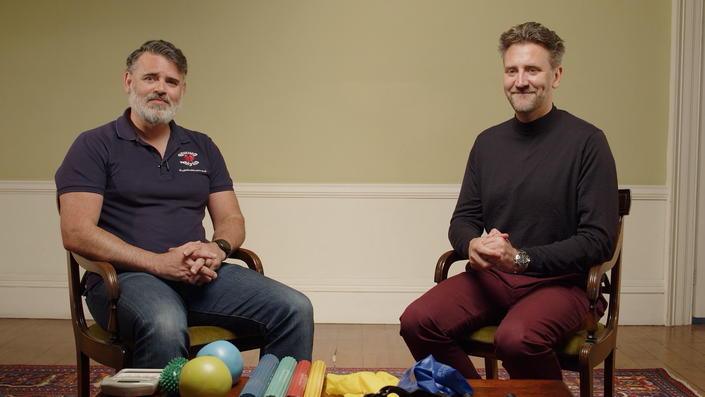Introduction
The Wrist and Hand Masterclass, taught by Dr Ian Gatt and Thomas Mitchell provides a complete overview of the assessment and management of wrist and hand injuries. This position statement provides clinically relevant, actionable information that may be useful to health professionals.
Part 1 - Functional Anatomy
The hand and wrist have a complex anatomy with a total of 29 bones and 2 axes of rotation. The wrist can be separated into the mid-carpal and radio-carpal joint. Movement tends to happen in combination, similar to the dart throwing action. It is important to consider which tendons close/stress certain joints and to incorporate rotational movements in rehab.
- Clinicians can use coupled movements to improve joint range of motion (e.g. improving wrist extension by performing radial deviation in a close packed position on dumbbells).
- Consider which muscles/tendons cross both the wrist and elbow joint when preparing a patient’s rehab plan.
Part 2 - Clinical Assessment
Wrist and hand injuries can be described as having either a sudden or gradual onset, and can be categorised as bone, ligament, muscular and tendon injuries. Examples of wrist injuries include scaphoid fracture, scapholunate injury and TFCC injury, among others. It is important to screen for uncommon causes of pain such as cancer, cysts and/or neural. Special tests and scans can also be considered to help with diagnosis.
- If someone presents to you with wrist pain 8-10 weeks following traumatic injury, it is worth considering a scan, as a certain pathology may have been missed.
- If you are highly suspicious of a scaphoid injury and the x-ray is clear, refer for an MRI, as it is most likely to pick up an occult fracture.
Masterclass Preview
Enjoy this free preview of Ian demonstrating stress tests for finger injuries.
Part 3 - Objectivity Matters
Objective testing should involve assessments which test the quality and quantity of movements and force produced. If the diagnosis is unclear, then the prognosis can become gray. Thus, it’s important to assess function as well to get a better overall picture. Testing equipment include goniometers, grip strength dynamometers and/or grippers to add to weights tools.
- When measuring ROM, think about the overall position (e.g. open or closed fist) of the hand/wrist, as it may influence the patient’s available ROM.
- During grip strength testing, measure both the max and mean values to get a better idea of their overall tissue tolerance to load.
- Use a manual scale if measuring hand/wrist load tolerance in a closed kinetic chain position.
Part 4 - Injury Management
When treating the wrist and hand, a combination of exercise, manual therapy and other adjunct treatments can lead to a better outcome. It is important to always address your patient’s goals and expectations. Regardless of which treatment method you choose, it should be carefully selected with the aim of assisting the natural healing process and to facilitate de-sensitisation.
- Wrists often need stability, so when prescribing exercises, consider keeping the wrist stable whilst moving the other joints (e.g. elbow flexion).
- Vibration therapy towards painful ranges of motion is useful for de-sensitisation.
- Ice + compression in the acute stage is helpful for inflammation and reducing pain.


